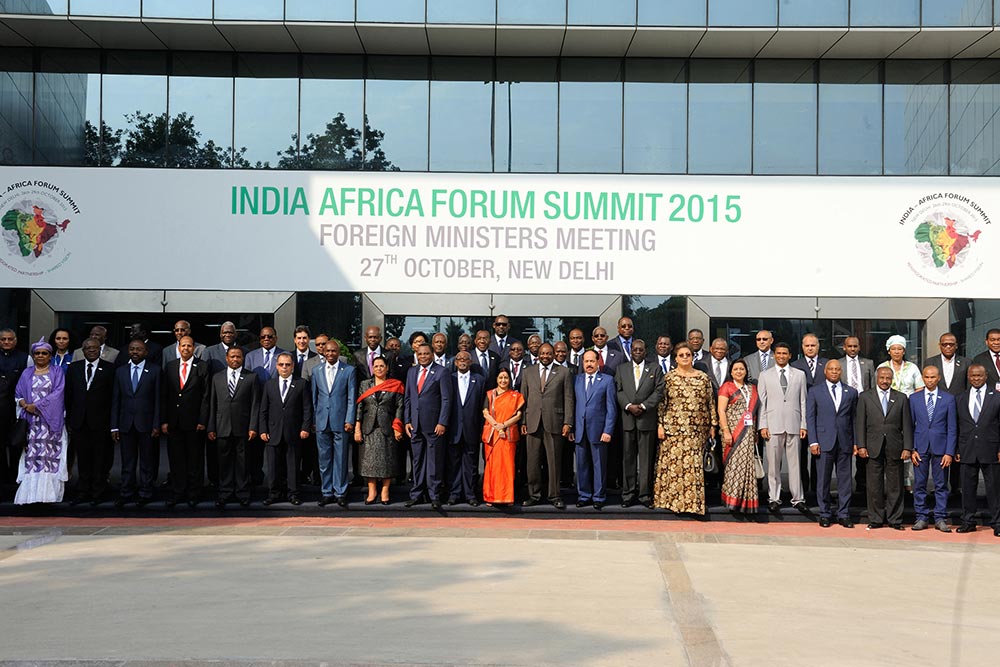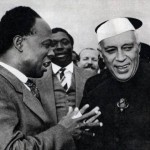After a gap of 17 years, Africa provides yet another leader—Cyril Ramaphosa, president of South Africa—as chief guest at the Republic Day celebrations. As he watches the colourful parade along with India’s president and prime minister, memories of Africa’s giants who preceded him, such as Tanzania’s Nyerere, Zambia’s Kaunda, Nigeria’s Obasanjo and South Africa’s Nelson Mandela would be rekindled. People will experience the special relationship that binds India with Africa.
The government’s initiative to hold Africa Day celebrations at the Vibrant Gujarat summit on January 19 was also special. It showcased the new dimensions of India-Africa cooperation, covering its history, political and economic facets, and projecting its vast potential.
This relationship goes back to the pre-Christian era when Indian goods and people began reaching the African continent. Colonialism brought the two regions and their people closer. The struggle for freedom and against Apartheid put them on the same side—the winning side. The Cold War witnessed most Asian and African nations join hands to strengthen the Non-Aligned Movement. In the past three decades, common aspirations for a speedy development drove India and Africa to re-invent their age-old links.
The process began in 2008, when then Prime Minister Manmohan Singh hosted the first India-Africa Forum Summit (IAFS) in New Delhi. A long-term blueprint for multi-sectoral cooperation was developed. The second summit in Addis Ababa in 2011 consolidated the gains. This diplomatic initiative, however, had its limitations because only a handful of African countries, selected under the Banjul formula, participated in the two summits.
The Modi government introduced a fundamental change by asserting, right from the beginning, that Africa and the Indian Ocean would figure among its foreign policy priorities. The decision to invite leaders of all 54 countries to the third IAFS, held in New Delhi in 2015, was widely welcomed in Africa. It also showed New Delhi’s ambition to be a key stakeholder in the continent at a time when new political players such as Russia, Turkey, UAE and Indonesia were joining the more experienced ones—US, EU, China and Japan—in forging close ties with Africa. The ‘new scramble for Africa’ had begun.
Those unaware of Africa’s assets—its culture, history, people and resources—often ask us: “what drives India’s interest in the so-called dark continent?” The answer partly lies in what happened when I, as India’s high commissioner to South Africa, called on Nelson Mandela in 2006 in Johannesburg. He spoke about the impact of Satyagraha launched by Gandhiji on Africans and Indians alike. Madiba also talked about the legacy and vision of Jawaharlal Nehru.
Besides that, rich history and political imperatives motivate India and Africa to work together for ensuring that institutions of global governance become representative of today’s power realities. Geo-economics has established the basic complementarity of needs and capabilities: Africa needs technology, capital and capacity building, whereas India needs the market, minerals and energy resources. Is China’s growing footprint in Africa a factor too? Undoubtedly it is. India may lag behind, but it continues to be in the race for a prominent place.
This is what Prime Minister Narendra Modi has grasped fully. With remarkable consistency and zeal, his government has striven to take India-Africa cooperation to a new level. Recall the following:
- The third forum summit proved a notable success, both logistically and in political gains, with all African governments participating in it, 42 at the head of state/government level.
- While in previous decades, visits by top Indian leaders to Africa used to be a rarity, the troika comprising the president, vice president and PM undertook 29 visits to African countries in the past four years.
- The VVIP traffic was not one-way. NewDelhi hosted 35 leaders from Africa during thesame period.
- The announcement by PM Modi of the ten guiding principles on India’s Africa policy, during his address before the Ugandan parliament, was innovative.
- As one who spent over seven years in Africa in senior diplomatic positions, I noted, with satisfaction, the government’s decision to open 18 new embassies and high commissions in African capitals. This will increase the number of Indian Missions in Africa to 47.
- India’s initiative, with France, to establish the International Solar Alliance has also excited African states, who see it as a potential source of capital and technology for renewable energy. While some scepticism prevails about the actual impact of this institution, its fundamental rationale is beyond dispute: India and Africa, not just the developed nations, need clean energy.
- India’s peacekeeping operations in Africa represent a success story. Current operations in Congo, Sudan, Ivory Coast and Liberia continue to win laurels for our security forces. The Indian Navy’s stellar role in curbing piracy off the Horn of Africa has also earned much admiration.
- India’s development partnership with Africa continues to grow. It involves millions of dollars that are utilised to establish training institutions in Africa, fund the Indian Technical and Economic Cooperation (ITEC) programme, and provide scholarships to thousands of African students studying in India.

Where, then, are the gaps and challenges in the India-Africa partnership? A critical but objective appraisal alone can reveal them, and there are quite a few.
First, trade with Africa is yet to perform satisfactorily. It has fluctuated between $72 billion in 2014-15 and $52 billion in 2016-17. Happily, it increased to $62 billion in 2017-18, but the goal of $100 billion is still distant. In comparison, China’s trade with Africa stands at $200 billion at present. Second, investment by Indian companies in Africa amounts to $54 billion. This needs to grow substantially. Third, concessional credit has been on an upward trajectory. Official sources indicate that 189 projects in 42 African countries are under implementation, backed by $11.4 billion worth of credits extended by India. There is a pressing need to scale it up as well as to improve delivery and cut delays.
Four, people-to-people interactions should be at the heart of this relationship. In recent years, sporadic incidents of harassment and violence against Africans in the national capital region and elsewhere have generated much anxiety. The underlying reasons need to be addressed effectively. On the other hand, the three-million strong Indian diaspora is our asset that needs constant nurturing. Fifth, most of our universities, institutions of higher learning and thinktanks continue to ignore the Africa story. This must change.
In sum, India’s Africanists rejoice to reckon that the government has led from the front to ensure that Africa receives much greater attention than in the past. Political relations are closer and warmer today. But the economic pillar needs to become much stronger and broader. And, the Third Space—youth and women groups, universities and thinktanks, and media houses should come forward to turn this engagement into a more meaningful and result-oriented commitment. There is no time to lose. The next India-Africa summit will take place in 2020.
Rajiv Bhatia is Distinguished Fellow, Gateway House and a former high commissioner to South Africa and Kenya
This article was originally published by Outlook. Click here to view the original article.


